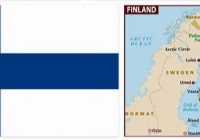Finland Geography
Finland State of Northern Europe ; the borders have a length that reaches 4400 km, of which about one third are coasts (in the S Gulf of Finland; in the W Gulf of Bothnia, both dependencies of the Baltic Sea), while two thirds are made up of land borders (with the Sweden, the Norway and… Read More »


